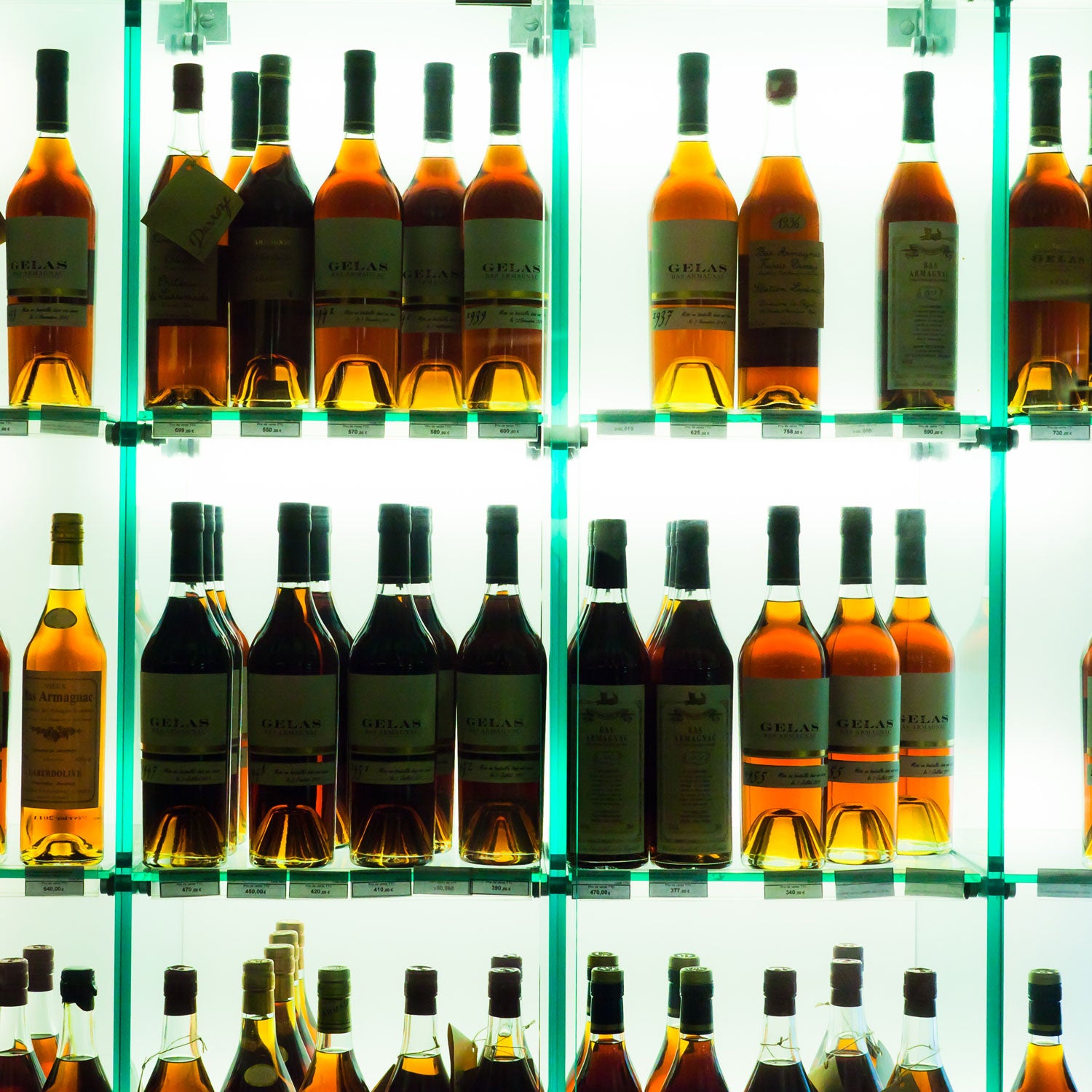The spirits business is finicky. What we’re drinking now can quickly become the stuff we can’t believe we used to drink. So while craft whiskey is enjoying its reign, some industry insiders are all placing bets on what will take over the throne: Armagnac.��
A brandy made in the of France, has never been as commercially popular as its mass produced cousin, cognac. But that’s actually one factor that makes the spirit so prime for discovering. Almost all Armagnacs are craft, coming from family owned producers. Plus, two economic events in the U.S. have conspired to set up the brandy as America’s new favorite drink: the relaxing of the Cuban trade embargo, and the in California.
“The more trade opens up with Cuba, the better it will be for not just Armagnac but for rum and cognac,” says Paul Yanon, a PR representative for French Armagnac distillery��. The beverage is also often associated with foie gras, though��it’s never paired with foie gras directly, but is mostly used in an ingredient in dishes containing foie gras.��“Everyone’s kind of looking at America right now, there’s a big interest, it could mean a lot to [Armagnac producers].”
If you’ve never heard of Armangac, you’re not alone. “It’s from a very, very small region made up of mostly family estates,” explains distiller Armin Grassa. Grassa’s family has been in the Armagnac business for 100 years, producing the distilled brandy for the Chateau de Tariquet brand. “Just to give you an idea of what makes up the region, in Gascony, our main work is to produce white wines. The region has a total of 23,000 hectares of white wine. Only 10 percent of that is used to make Armagnac. On the other hand, there are over 70,000 hectares used to make cognac.”��
At Chateau de Tariquet, Grassa raises grapes on 1,000 hectares; of those, only 100 hectares are used for Armagnac production. “We don’t have any big alcohol growers who have invested in our region,” says Grassa. Not having to support a multimillion-dollar industry has allowed distillers to maintain their autonomy. “Because Gascons take pride in the ‘craft’ of producing Armagnac, it has not become a commercialized industry,” says Ariane Daguin, a Gascony native and the cofounder of , a company that imports organic specialty meats, like foie gras, to the U.S.��
That means things are still done the way they’ve always been done. In fact, at harvest time in Gascony, it’s not unusual to see distillers wheeling stills through the countryside. But just because Armagnac is a small part of Gascony’s spirit production, doesn’t mean it’s a small part of the regional culture. At dinner tables across the countryside, Armagnac is a regular after-dinner staple.��
“The succulent taste comes from inhaling the aromas, which develop and become more complex as the glass warms up in your hands. You need a good half an hour to get through one glass,” says Daguin. She adds that for this reason, Armagnac has come to be associated with good cigars and, of course, foie gras.
If Armagnac does become the next big thing, whatever you do, don’t compare Armagnac to cognac. “They’re two very different products,” says Grassa. Armagnac has a fruitiness to it, though it’s not sweet and it’s very complex. “It actually shares a similar flavor profile to whiskey,” he adds.��
And if that wasn’t enough to sell you on it, because of its relative obscurity, Armagnac remains surprisingly affordable. (A typical 700ml bottle runs between $40 and $80.)��But if it catches on the way growers hope it will, that may not be the case for long.


